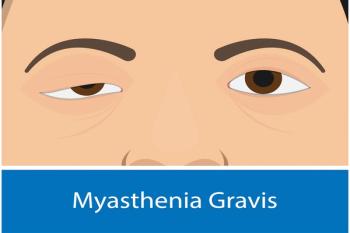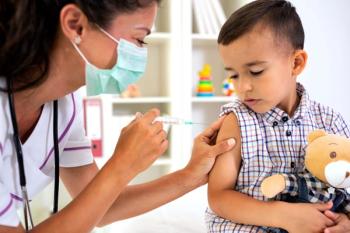
1 in 3 Minors Facing Mental Health Crisis Experience 12-Hour ED Waits
Key Takeaways
- Pediatric mental health ED visits have risen, with many children experiencing prolonged stays due to limited psychiatric beds, especially in non-children’s hospitals.
- A study found 32.1% of pediatric mental health ED visits lasted 12 or more hours, with factors like age, race, and insurance type influencing boarding duration.
Pediatric mental health crises surge as emergency department (ED) waits exceed 12 hours, highlighting urgent needs for systemic health care improvements.
One in 3 pediatric patients facing a
Over the past decade, pediatric mental health ED visits have risen significantly, reflecting a growing mental health crisis among children. During these visits, many children experience "boarding," where they remain in the ED for extended periods due to a lack of available inpatient psychiatric beds. The Joint Commission recommends that boarding not exceed 4 hours, as prolonged stays are associated with adverse outcomes such as medication errors and reduced ED efficiency.2
The COVID-19 pandemic further intensified these issues. Pediatric mental health ED visits became more frequent and prolonged, particularly at children’s hospitals. However, most children in the United States receive emergency care at non-children’s hospitals, which are underrepresented in current research. In addition, existing studies often focus on specific populations, such as commercially insured youth or young adults, and do not reflect national trends across all payers and pediatric age groups.
“As the youth mental health crisis continues, we have been seeing more severe psychiatric conditions in the ED. Most of these kids seek emergency care at adult hospitals, which often have more limited pediatric resources compared to children’s hospitals and might not be prepared to provide the necessary supports,” Jennifer Hoffmann, MD, MS, lead author and the behavior health medical director of emergency medicine at Ann & Robert H. Lurie Children’s Hospital of Chicago, said in a
Researchers of the
In total, 975 records were included, representing an estimated 5.9 million pediatric mental health ED visits across the US from 2018 to 2022. Of these, 42.9% were by adolescents aged 15 to 17 years, 56.4% were female, and 59.7% were publicly insured. Overall, 9.5% of visits resulted in hospital admission, and 15.7% led to transfer to a psychiatric facility. Among the estimated 1.41 million visits that ended in admission or transfer, 70.8% involved blood testing, 32.1% lasted 12 or more hours, and 13.1% lasted at least 24 hours.
Multivariable analysis found that the odds of boarding (≥ 12-hour visits) were significantly lower for 10- to 14-year-olds, non-Hispanic patients of other races, those with private insurance, and weekend visits. In a sensitivity analysis using a 24-hour or longer threshold, younger children (ages 5-9 years), non-Hispanic Black patients, and visits during school months had significantly higher odds of boarding. In contrast, lower odds were associated with private or other insurance types and arrival by ambulance.
The new data come after a
In a statement, Hoffmann emphasized that addressing the growing demand for pediatric mental health care will require both policy and system-level changes.2 In particular, she stressed the need to improve Medicaid reimbursement rates and maintain federal support for the Emergency Medical Services for Children program, which plays a critical role in training non-pediatric hospitals to deliver effective emergency care to youth.
To further expand access, she recommended increasing the use of telehealth, expanding school-based mental health services, and integrating behavioral health into primary care. She also highlighted the promise of emerging models such as psychiatric urgent care clinics and free-standing psychiatric emergency departments to help meet the needs of children and adolescents in crisis.
References
1. Hoffman JA, Foster AA, Gable CJ, et al. Pediatric mental health boarding in US emergency departments, 2018-2022. J Am Coll Emerg Physicians Open. Published online May 27, 2025. Accessed May 28, 2025. doi:
2. Joint Commission on Accreditation of Healthcare Organizations. The “patient flow standard” and the 4-hour recommendation. Jt Comm Perspect. 2013;33(6):13-14.
3. One in three youth with mental health crisis spent over 12 hours in emergency department waiting for psychiatric bed. Press release. Ann & Robert H. Lurie Children’s Hospital of Chicago. May 27, 2025. May 28, 2025.
4. Santoro C. Black youths overlabeled high risk in mental health emergencies. AJMC®. May 9, 2025. Accessed May 28, 2025.
5. Agarwal AK, Seeburger E, O’Neill G, et al. Prevalence of behavioral flags in the electronic health record among Black and White patients visiting the emergency department. JAMA Netw Open. 2023;6(1):e2251734. doi:
6. Robinson AE, Driver BE, Cole JB, et al. Factors associated with physical restraint in an urban emergency department. Ann Emerg Med. 2024;83(2):91-99. doi:
Newsletter
Stay ahead of policy, cost, and value—subscribe to AJMC for expert insights at the intersection of clinical care and health economics.













































